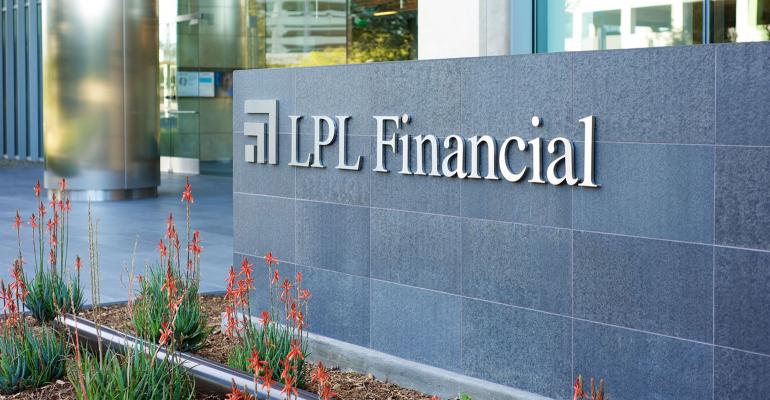Since 2019, LPL Financial has expanded its affiliation models beyond the traditional registered reps, small banks and credit unions. Executives launched Strategic Wealth Services, designed to make a low-friction path for wirehouse liftouts, its Linsco channel for advisors employed by LPL, and its RIA custody service. Larger financial institutions have recently become a focal point of the firm's growth strategy, with the additions of BMO Harris, M&T, People’s United and CUNA Mutual Group’s wealth management business.
During the firm’s annual Investor and Analyst Day held this week, LPL Chief Executive Officer Dan Arnold said the firm sees the next growth opportunity in the private wealth market, bringing more sophisticated investment and banking services to high-net-worth clients, as well as inside broader enterprises, including the wealth management programs run by insurance companies.
Executives touted success at the earlier moves outside LPL's traditional lanes: Rich Steinmeier, managing director and divisional president, business development of LPL, said the firm originally predicted the average gross dealer concession (GDC), or product sales revenue, in the employee-based Linsco channel would hover around $500,000 to $800,000, on average, per recruit. But the performance was better than expected, with GDC around $1.2 million. In addition, the firm thought average recruits into its Strategic Wealth Services model would have around $300 million in AUM on average; it's around $450 million. Steinmeier said numbers show the firm’s models are resonating with larger, more sophisticated teams of advisors.
The firm is now building out more services to support the business of high-net-worth advisors, Steinmeier added, including partnerships with investment banks to give clients direct access to capital markets. There are specialized lending partnerships for yachts, aircraft and art, and an expanded UMA platform. The firm also continues to build out access to alternative investments and support for more complex multi-generational planning.
“As you put those together, those capabilities, we think, are exactly to the spot of what is needed to serve those high-net-worth segments” of current advisors, he said, and "ultimately ... launch into the private wealth market.”
Arnold said the firm is currently exploring banking and lending "as a service," with some rollouts expected in 2023.
“As we go forward with automation and access to data and with some of these digital solutions that exist out there in the marketplace, we’re finding that that opportunity to do that as a service is much more compelling,” he said.
Arnold also discussed the firm’s strategy in the financial institution space, where it is committed to bringing brokerage services to larger banks and credit unions. These larger institutions are finding they can offload regulatory compliance and legal risks on LPL as well as middle- and back-office functions to reduce costs and improve their end-investor experience.
“We realized that this same capability set and those same needs don’t just sit with large banks,” Arnold said. “They also are relevant potentially in wealth management programs run by insurance companies. They also can be relevant in trust assets that are served in a different way at these large banks. And so as you see us now moving forward, we see other channels of which to take this enterprise solution to, to expand our opportunity set, continue to create a fresh, differentiated and new outsourcing solution within that part of the market to continue to drive growth through this model.”
In many of these financial institutions, Steinmeier said, LPL is working with the leaders of wealth management divisions, which includes retail wealth and trust businesses, often looking to unify the look, feel and function of the services inside their institution.
“What they’re asking for is an integrated, unified solution—we call it “bank trust”—that allows us to serve them and for them to go to market on one unified offering across their advisors and their trust officers through one work station, one set of advisory platforms, and a solution that the end investors will see uniformly across those,” he said.
LPL executives also highlighted the firm’s new “liquidity and succession solution,” the broker/dealer’s newest offer inside its business solutions program for advisors. Arnold said the firm decided to launch this to fulfill a need for advisors who couldn’t find another advisor to help them carry out their ownership transition. LPL will buy their practice, run it under the Linsco model temporarily until that advisor’s eventual successor is ready.
“We’ll buy the practice; we’ll keep it on our platform, in this case. We’ll serve and support it with our local level services we’ve created associated with the Linsco model, and when the advisor’s ready to exit, we’ll sell it back to another independent advisor, such that we continue to maintain those principles of independence, and by doing that, we’ve now just recycled the lifetime opportunity to serve that asset for another 20 to 30 years,” Arnold said.
The offer was introduced to LPL affiliates last summer. The program will open up to advisors unaffiliated with LPL in the first half of 2023.





